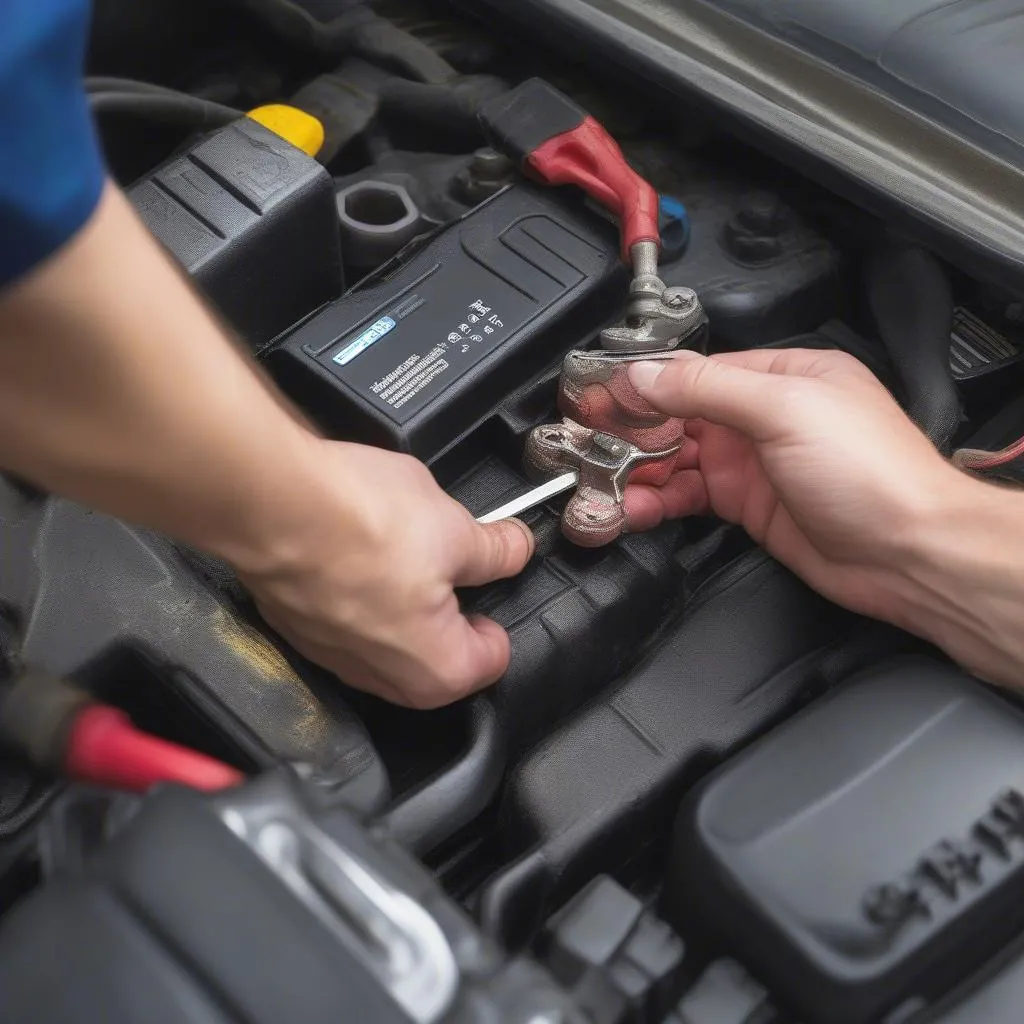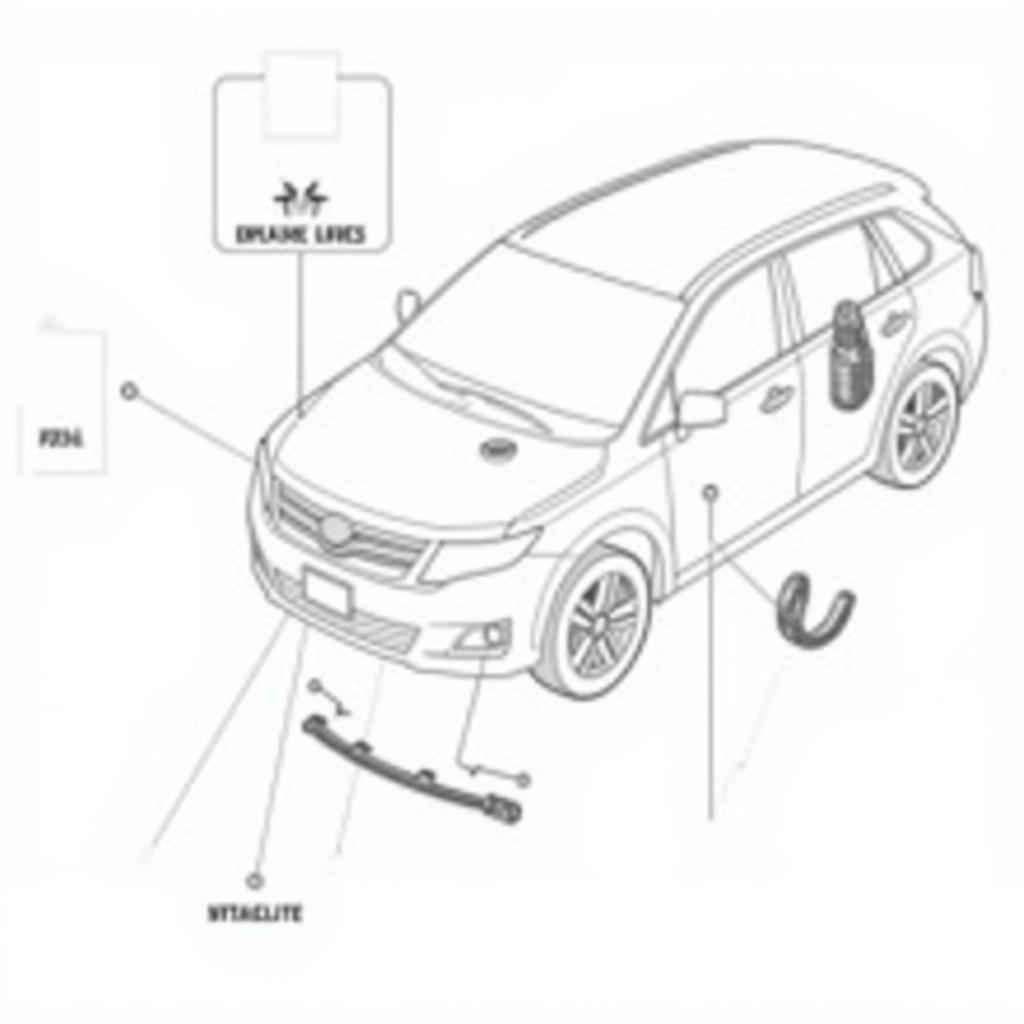A “Ridgeline Brake Warning” light flashing on your dashboard can be a cause for concern. It usually indicates an issue with your vehicle’s braking system, requiring immediate attention. While it might seem alarming, understanding the common causes of this warning light can help you take the appropriate steps to diagnose and resolve the problem.
Common Causes of a Ridgeline Brake Warning Light
There are several reasons why your Ridgeline might display a brake warning light. Some of the most frequent culprits include:
- Low Brake Fluid: Brake fluid is vital for your Ridgeline’s braking system to function correctly. If the fluid level drops below a certain point, the warning light will illuminate. This could be due to a leak in the braking system or simply worn-out brake pads.
- Worn Brake Pads: As your brake pads wear down over time, the brake fluid level in the reservoir decreases. Once the pads reach a certain level of wear, it triggers the brake warning light.
- Faulty Brake Light Switch: The brake light switch activates your brake lights when you press the pedal. If this switch malfunctions, it can also trigger the brake warning light.
- ABS Issue: A problem with your Ridgeline’s Anti-lock Braking System (ABS), such as a faulty wheel speed sensor, can also cause the brake warning light to come on.
- Parking Brake Engaged: It might seem obvious, but sometimes the simplest explanation is the right one. If your parking brake is even slightly engaged, it can illuminate the brake warning light.
Diagnosing the Problem: What to Do When Your Brake Warning Light Comes On
The first step is to assess the situation. If the warning light is on continuously but not flashing, and the brake pedal feels firm, it might be safe to drive cautiously to a nearby mechanic or auto parts store. However, if the light is flashing, the pedal feels spongy, or you hear unusual noises while braking, it’s crucial to stop driving immediately and contact a qualified mechanic.
Here’s a step-by-step guide to help you diagnose the issue:
- Check Your Parking Brake: Make sure the parking brake is fully released. If it’s even partially engaged, it can trigger the warning light.
- Inspect Brake Fluid Level: Park your Ridgeline on a level surface and locate the brake fluid reservoir. Check the fluid level. If it’s below the “MIN” mark, add the appropriate brake fluid (DOT 3 or DOT 4, as specified in your owner’s manual).
- Inspect Brake Pads: If you’re comfortable with basic car maintenance, you can visually inspect the brake pads through the spaces in the wheel. If they appear thin or worn down, it’s time for a replacement.
- Consult a Mechanic: If the brake fluid level is normal and the parking brake is disengaged, it’s best to consult a qualified mechanic. They have the expertise and tools to diagnose the problem accurately, whether it’s a faulty brake light switch, an ABS issue, or another underlying problem.
 Ridgeline Brake Pad Inspection
Ridgeline Brake Pad Inspection
Remote Diagnostics and Software Solutions for Ridgeline Brake Issues
In today’s technologically advanced automotive industry, remote diagnostics and software solutions are becoming increasingly common in addressing vehicle issues, including those related to braking systems.
“Remote diagnostics allow us to connect to a vehicle’s onboard computer system and retrieve valuable data about its health and performance,” says John Miller, a certified automotive technician with over 20 years of experience. “This can be particularly helpful in identifying the root cause of a brake warning light, especially if it’s related to the ABS or other electronic components.”
Software updates, often performed remotely, can address known issues with the vehicle’s software that may be contributing to brake warning light issues.
Conclusion: Don’t Ignore a Ridgeline Brake Warning
A “Ridgeline Brake Warning” light should never be ignored. Addressing the issue promptly ensures your safety and prevents potentially costly repairs down the road. By understanding the common causes and taking the appropriate steps to diagnose the problem, you can confidently address the issue and get back on the road safely.


